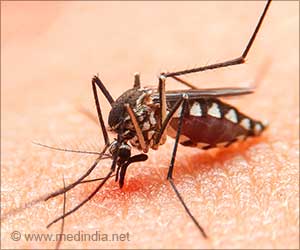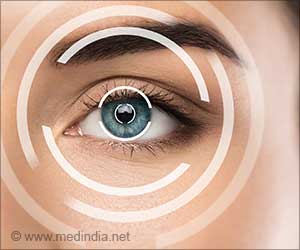Indian cities have consistently dominated the tops of lists of places with the worst air for residents, with air quality frequently several times higher than the limits set by the World Health Organization.
The majority of urban air pollutants are from anthropogenic sources from power plants, and automobiles like trucks, and buses, to burning fuels including coal, and wood.
Ozone (O3), sulfur dioxide (SO2), nitrogen dioxide (NO2), carbon monoxide (CO), and nitrous oxide (NO) are the principal gaseous pollutants present in outdoor air.
Particulate matter (PM), which consists of tiny particles and liquid droplets, also contaminates the air we breathe.
One-millionth of a meter is called a micron, and PM can have diameters ranging from 0.01 to 300 microns. Particulates smaller than 10 microns are referred to as “inhalable particles” since they have the ability to enter our circulation and enter our lungs profoundly. Particles as small as 2.5 millimeters or less pose a greater risk since they can easily enter the lungs and then enter the bloodstream.
Advertisement
Particulate matter, gaseous emissions, nitrogen dioxide, traffic-related pollutants, and tobacco smoke have a higher correlation with diabetes. According to research on animals, nitrogen dioxide (NO2) and particle air pollution (PM2.5) are the main causes of type 2 diabetes (1✔ ✔Trusted Source
Air pollution and risk of type 2 diabetes mellitus: a systematic review and meta-analysis
Go to source
).Why Delhi and Chennai’s Air Quality Makes Headlines?
There is a concerning correlation between the prevalence of type 2 diabetes in Delhi and Chennai and air pollution. The significance lies not in the novelties of the results, which are not groundbreaking, but rather in the discovery that the correlation, previously identified in China and Western nations, is also present in urban India.
The Center for Cardiometabolic Risk Reduction in South Asia (CARRS) Surveillance Study includes the latest investigations. Researchers recruited 6,722 adults in Chennai and 5,342 in Delhi, and from 2010 to 2016, they monitored their health using questionnaires and blood samples, which they used to assess for fasting plasma glucose (FPG) and glycosylated hemoglobin (HbA1c).
Their findings include-
-
FPG increased by 0.21-0.58 mg/dL (milligrams per decilitre) and HbA1c by 0.012-0.024 in Delhi and −0.36-1.39 mg/dL and 0.01-0.06 in Chennai for every 10 μg/m3 increase in PM2.5 levels each month - In Delhi, both ranges roughly doubled over a six-month period when PM2.5 levels changed by 10 μg/m3, but this change was not linked to a statistically meaningful outcome in Chennai
- Younger participants were more susceptible to acquiring type 2 diabetes in Delhi, whereas hypertensive patients were more prone to the condition against long-term exposure to PM 2.5 in Chennai (2✔ ✔Trusted Source
PM2·5 exposure, glycemic markers and incidence of type 2 diabetes in two large Indian citiesGo to source
) - There may be a 9-36% increased risk of type 2 diabetes for every 10 μg/m3 (micrograms per cubic meter air) difference in the annual average of PM2.5.
How Does Air Pollution Cause Diabetes?
Induces Vascular Insulin Resistance
A mechanism involving pulmonary oxidative stress is responsible for vascular insulin resistance and inflammation caused by short-term exposure to PM2.5. PM2.5-induced suppression of vascular insulin signaling may hasten the development of systemic insulin resistance (3✔ ✔Trusted Source
Exposure to Fine Particulate Air Pollution Causes Vascular Insulin Resistance by Inducing Pulmonary Oxidative Stress
Go to source
).
Furthermore, oxidative stress-related conditions of any kind may make a person more vulnerable to PM 2.5-related damage.
Mimic Unhealthy Effects of High-Fat Diet
Animal experiments with mice given a high-fat diet in a pollution-free environment and compared with mice exposed to concentrated PM2.5 for 10 weeks revealed that the effects of high air pollution levels could be similar to those of a high-fat diet.
Attacks Immunity
Immune activation, oxidative stress, and CNS inflammation have all been invoked in air pollution-related diabetes. Activation of TLRs (Toll-like receptors) via the generation of secondary mediators such as oxidized lipids, cytokines, and reactive oxygen species may represent an important mechanism that may help explain the effects of inhalational stimuli on distant target organ tissues.
In conclusion, there is a strong correlation between exposure to air pollution and a higher risk of type 2 diabetes mellitus.
The ubiquitous, persistent, and lifetime exposure to air pollutants may arguably make this an important determinant of cardio metabolic health, especially in areas with high levels of air pollution, even though the current epidemiologic data suggest that air pollution may play a minor role in human health compared to other more dominant factors like lifestyle choices and genetic factors.
To combat the high prevalence of diabetes, it is in fact essential to develop and put into action population- and region-specific policies aimed at lowering ambient air pollution in order to significantly improve public health at the population level.
References :
- Air pollution and risk of type 2 diabetes mellitus: a systematic review and meta-analysis
– (https://pubmed.ncbi.nlm.nih.gov/25262110/) - PM2.5 exposure, glycemic markers and incidence of type 2 diabetes in two large Indian cities – (https://drc.bmj.com/content/11/5/e003333)
- Exposure to Fine Particulate Air Pollution Causes Vascular Insulin Resistance by Inducing Pulmonary Oxidative Stress – (https://pubmed.ncbi.nlm.nih.gov/27128347/)
Source: Medindia



